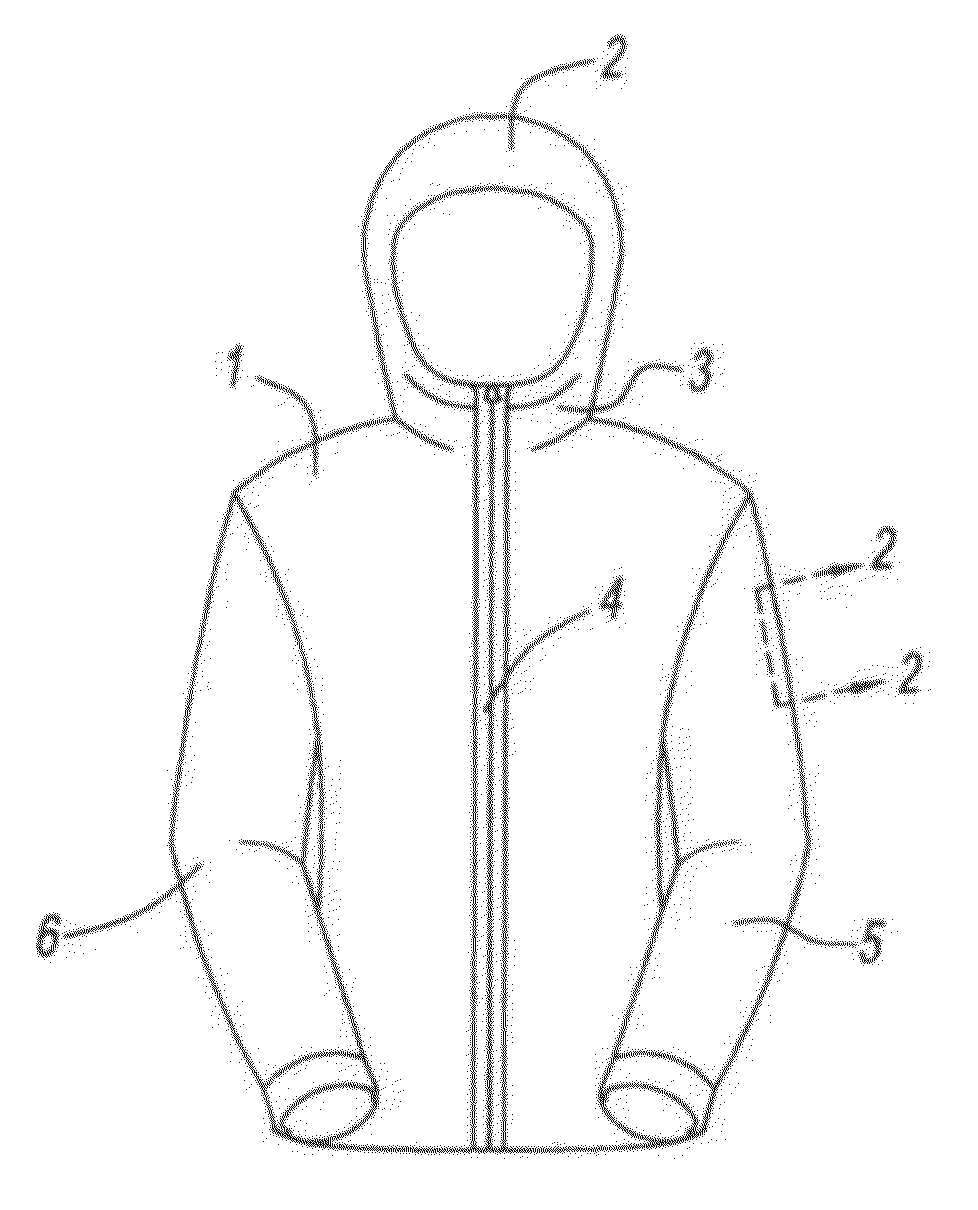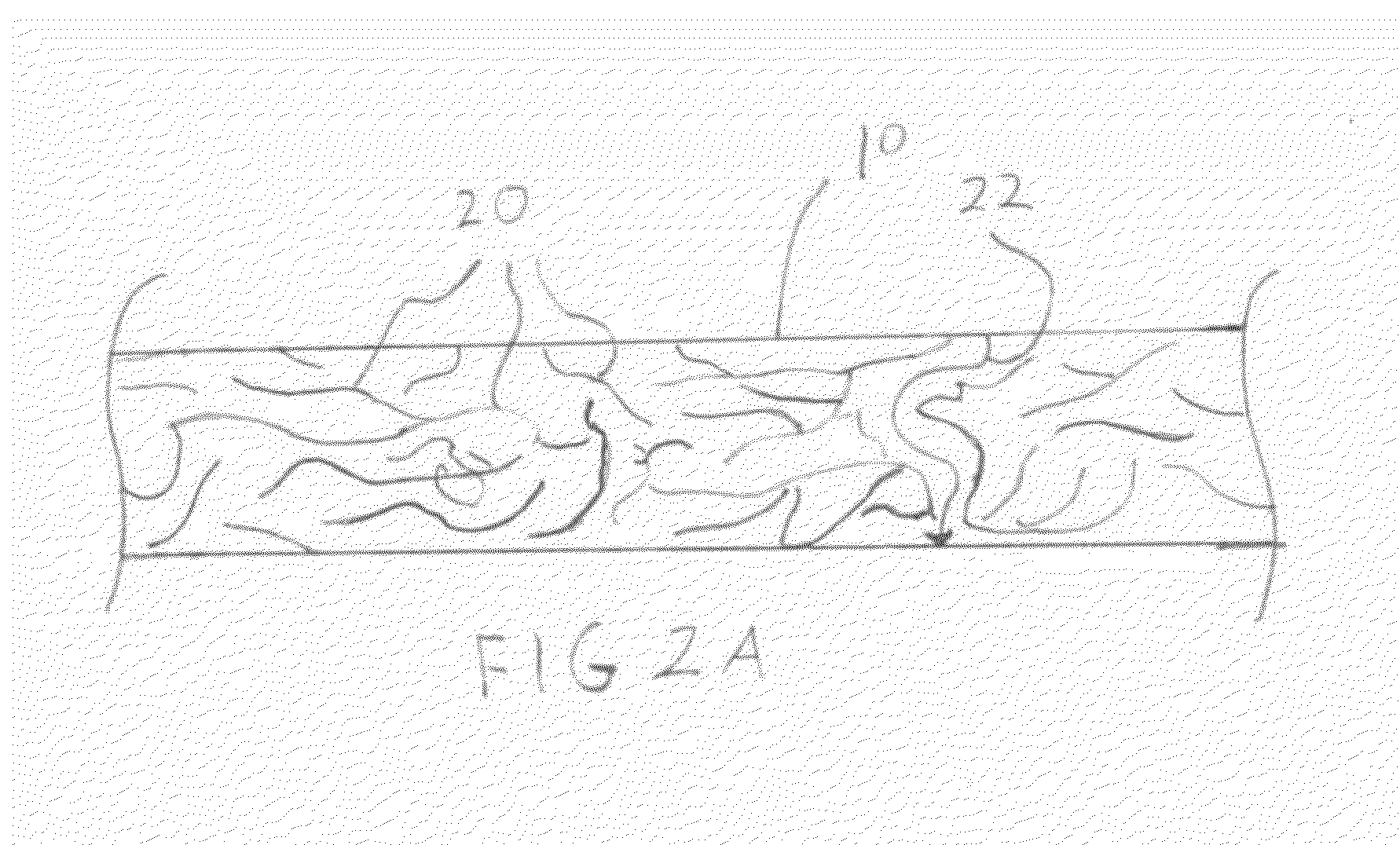Insect Protective Garment
- Summary
- Abstract
- Description
- Claims
- Application Information
AI Technical Summary
Benefits of technology
Problems solved by technology
Method used
Image
Examples
Embodiment Construction
[0017]FIG. 1 shows a garment 1 that covers the upper torso of a wearer in the form of a jacket. The upper torso garment 1 has a hood 2 attached thereto and the hood connects to the jacket 1 at a neck line 3. The jacket has a front closing portion by way of zipper 4 that may be attached to the jacket 1 by way of fabric strips (now shown), which is a common practice in the construction of jackets. The jacket 1 also has sleeves 5 and 6 attached thereto.
[0018]The most important aspect of the invention is the fabric material forming the garment, which is illustrated in FIGS. 2 and 2A. FIG. 2 is taken along the arrows 2-2 on the sleeve of FIG. 1. The fabric 10, shown in FIG. 2, consists of a non-woven material that exhibits enough of a thickness 9 to prevent any insect stinger bite from fully penetrating and impaling into the skin of the wearer. Such thickness should be a, at a minimum, 3 mm thick an preferably at least ¼ inch thick.
[0019]As further shown in FIG. 2A, fabric 10 includes ir...
PUM
 Login to View More
Login to View More Abstract
Description
Claims
Application Information
 Login to View More
Login to View More - R&D
- Intellectual Property
- Life Sciences
- Materials
- Tech Scout
- Unparalleled Data Quality
- Higher Quality Content
- 60% Fewer Hallucinations
Browse by: Latest US Patents, China's latest patents, Technical Efficacy Thesaurus, Application Domain, Technology Topic, Popular Technical Reports.
© 2025 PatSnap. All rights reserved.Legal|Privacy policy|Modern Slavery Act Transparency Statement|Sitemap|About US| Contact US: help@patsnap.com



